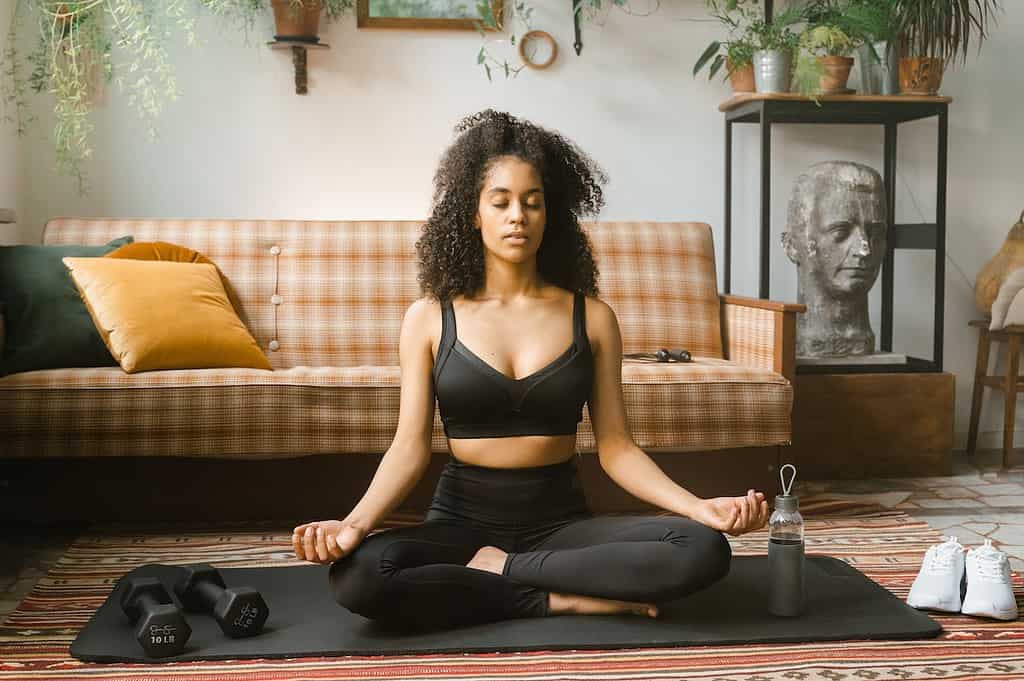How To Incorporate Mindfulness Into Daily Life
Two techniques that can enhance mental and emotional health are meditation and mindfulness. You can lessen stress and anxiety, promote feelings of peace and relaxation and improve attention and concentration by setting aside some time each day to practice mindfulness and meditation. In this article, we’ll discuss the definitions of mindfulness and meditation, their advantages,…

Two techniques that can enhance mental and emotional health are meditation and mindfulness. You can lessen stress and anxiety, promote feelings of peace and relaxation and improve attention and concentration by setting aside some time each day to practice mindfulness and meditation. In this article, we’ll discuss the definitions of mindfulness and meditation, their advantages, and how to start implementing them into your everyday routine.
What is mindfulness in our daily life?
Being in the present moment without passing judgment is the practice of mindfulness. It entails remaining focused on the here and now while observing thoughts and emotions without responding to them. Wherever, at any time, anyone can practice mindfulness by engaging in activities like eating, walking, or breathing exercises in their daily life. The techniques of mindfulness and meditation can both enhance one’s mental and emotional health.
What is meditation?
Training the mind to concentrate on one thing, such as the breath, a mantra, or a vision, is a key component of the meditation practice. The purpose of meditation is to still the mind and attain a deeply relaxed and focused state. There are several ways to meditate, including seated meditation, walking meditation, and guided meditation. Advantages of meditation and awareness include:
Several studies have demonstrated that regular practice of mindfulness and meditation can significantly improve both mental and physical health. The following are just a few advantages of mindfulness and meditation:
-Less anxiety and stress.
-Improved emotional control and mood.
-Heightened sense of serenity.
-Increased concentration and focus
-Decreased signs and symptoms of anxiety and sadness
-Improved standard of sleep.
-Decreased risk of developing heart disease and lower blood pressure.
Ways to be present in the moment:
These are a few techniques for mindfulness training: Breathing techniques Spend some time concentrating on your breath. Take a slow, deep breath in with your nose, hold it for a moment, and then slowly let it out through your lips. Take attention to how your body feels as the breath enters and exits.
Meditational body scan: Place yourself in a comfortable posture, either lying down or sitting, and pay attention to various body parts, starting at the top of your head and working your way down to your toes. Pay close attention to any feelings or sensations in any part of your body.
Healthy eating: Take note of the aromas, tastes, and textures of the food you are consuming. Eat gently, enjoying every bite. Take a stroll while being mindful of the sights, sounds, and sensations all around you. Pay attention to how your body is moving and how it feels when your feet are on the ground.
The best way to meditate: These are a few techniques for meditation: Seated contemplation With your back straight and your eyes closed, take a comfortable seat. As your thoughts stray, gently bring them back to your focal point by paying attention to your breath or a specific object.
Take a leisurely stroll while concentrating on your body’s motion and the sensations in your feet. If your thoughts stray, gently draw them back to the present.
Meditation that is guided: Use an app or audio to follow along. This can be a practical way to begin meditating and learn various methods.
Advice for beginning: Here are some pointers for starting a mindfulness and meditation practice:
Begin modestly: Start each day with just a few minutes of mindfulness or meditation and progressively extend the time. Locate a peaceful area: Remove all distractions and pick a peaceful area where you won’t be disturbed.
Keep calm: Being mindful and practicing meditation take practice, so have patience with yourself and try not to become frustrated if your mind wanders. Routine practice when it comes to mindfulness and meditation, consistency is crucial every day, even for a little while, practice.
Apply a timer: To avoid having to constantly check the time, set a timer for the duration of your practice session.
Take care of yourself. When practicing mindfulness and meditation, don’t criticize yourself or your ideas. Instead, cultivate self-compassion and accept that daydreaming is a normal part of life.
Test out other approaches: Don’t be scared to experiment and find what works best for you when it comes to mindfulness and meditation practices.
In conclusion, mindfulness and meditation exercises can have a variety of positive effects on both mental and physical health. By implementing these techniques into your everyday routine, you can decrease anxiety and tension, increase concentration and focus, and


